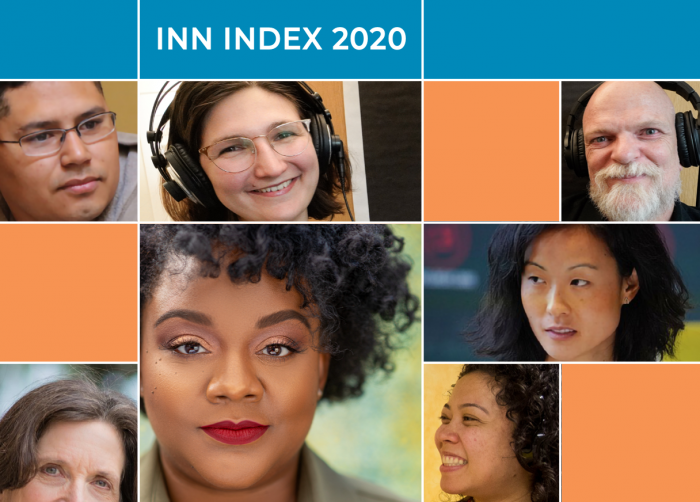
The ranks of nonprofit newsrooms are growing as more founders choose community-supported models over dependence on advertising. But are nonprofit newsrooms reflecting the people they want to serve?
The INN Index surveyed 117 nonprofit news organizations — roughly half of the Institute for Nonprofit News’ membership — on the diversity of their staffs in 2019 and asked related questions about hiring practices and inclusion efforts. The report represents the broadest sampling of diversity, equity, and inclusion data in the sector to date. (The results of the report will be presented at the “INN at Home: Racial Equity in Journalism” conference on Tuesday.)
The timing is worth noting. Newsrooms responded in February and March 2020, a few months before protests over racial injustice and police brutality put internal discussions over diversity in coverage and representation in the spotlight at major outlets across the country. (Relatedly, newsrooms reported that “the most forceful advocacy for improving diversity comes from within their organization rather than from outside sources,” according to INN.)Back in 2016, INN found only eight member organizations either led by people of color or serving communities of color out of more than 100 members. Three years later, with more than 285 members, INN found that “about 60” are led by people of color and 30 are dedicated to covering underrepresented communities.
Despite that upward trend, INN found the majority of respondents said their staff does not reflect the diversity of the communities they serve.

On average, nonprofit newsrooms are 68% white and led by an executive level that’s 81% white. Black journalists make up 9% of staff and 6% of leadership positions while 9% of staff and executive-level positions are filled by Hispanic employees.
More than half of all nonprofit outlets have either no people of color or “only a small percentage” within their ranks. The vast majority — more than two-thirds — do not have a single person of color in leadership at the executive level.
The INN report concludes that though “nonprofit news publishers tell us they place a high value on increasing racial and ethnic diversity in their organizations,” they’re not always following through with action. In fact, more than a third said they have done “little or nothing” to address inclusion, equity, or diversity within their organizations.
What’s stopping them? Many INN members pointed toward their small size and a lack of funding.
“Some publishers say they also need dedicated time or training and mentoring to develop effective diversity plans,” according to the report. “Only six in 10 organizations had the opportunity to fill any position at all in 2019; only one in four filled three or more posts. Small organizations especially rely heavily on freelancers.”
Retention, rather than hiring, has also proved to be a problem.
At the Oklahoma Watch, executive editor David Fritze said competition for diverse talent has impacted staff diversity. Last year, his organization saw two Native American employees recruited by other organizations. People of color also leave journalism at higher rates. (Earlier this month, INN’s own Fran Scarlett wrote about leaving the industry for a decade because of its problem with race.)
Overall, in 2019, “for every 10 white employees hired that year, nearly six left a nonprofit news outlet. But for every 10 Black employees hired, nearly seven left. And for every 10 Hispanic employees, nearly nine left.”
The nonprofit newsroom demographics fit with wider trends at nonprofit organizations in the United States. Nonprofit and charitable institutions in general struggle with diversity, especially at the leadership level. Nearly nine out of 10 nonprofit executive directors or presidents of nonprofits in the United States are white, according to a 2017 study cited by INN.
Overall, INN claims that nonprofit newsrooms are more diverse than for-profit newsrooms, but still lag behind the makeup of the United States overall. The comparison to for-profit newsrooms is difficult to confirm, given the lack of a definitive industry-wide survey and the fact that many outlets have not been especially forthcoming with equity and diversity information.Ultimately, INN called the study “a reality check” for nonprofit journalism and stressed that publishers need to “actively prioritize building diversity in their organizations and fostering policies and practices that promote equity and inclusion.”
You can download the full report here.